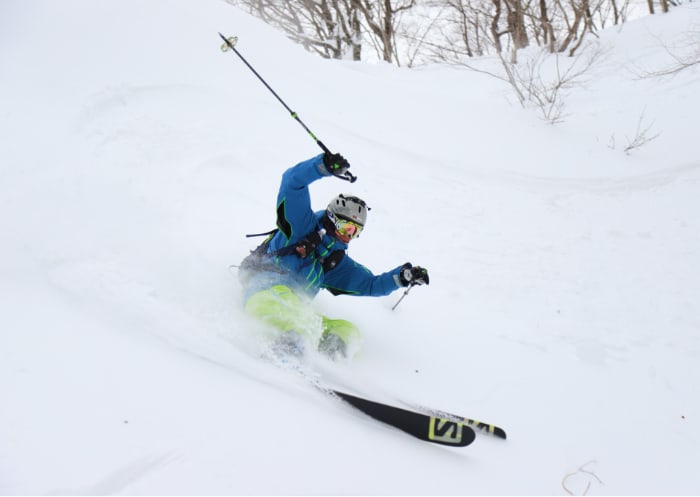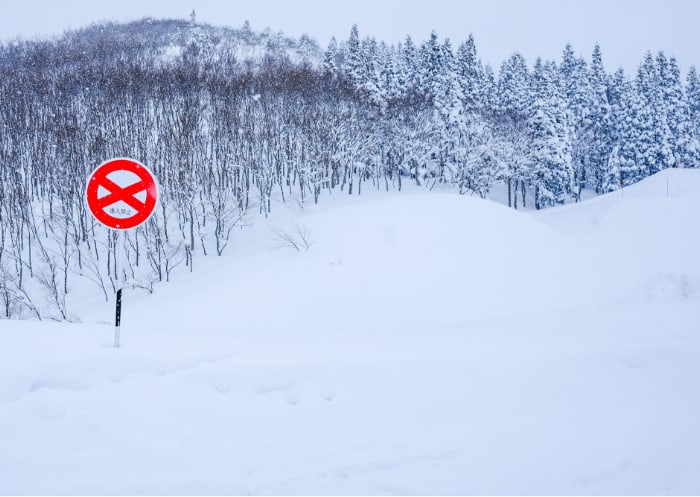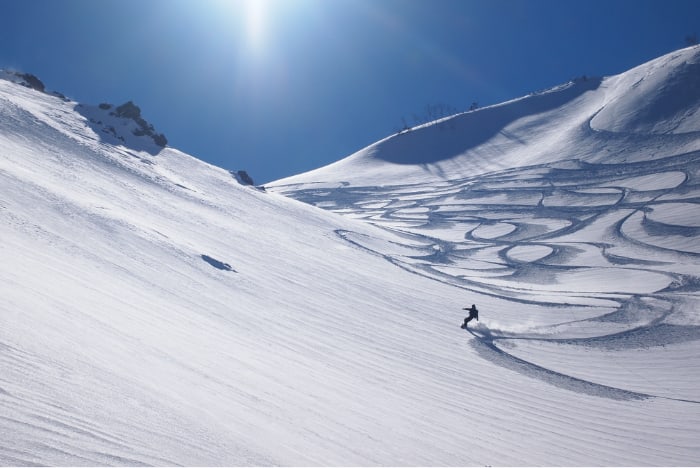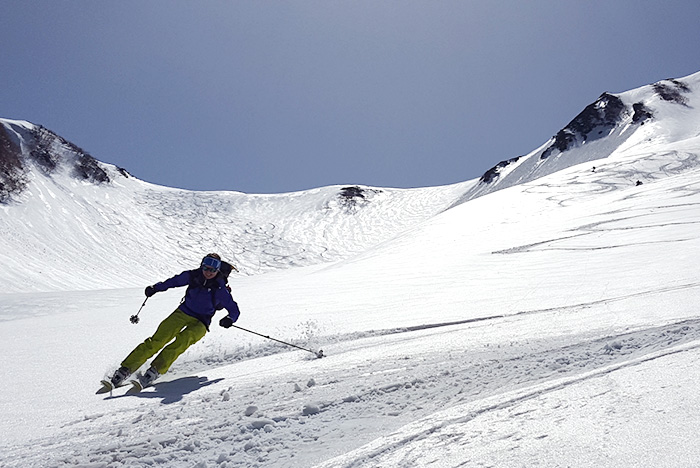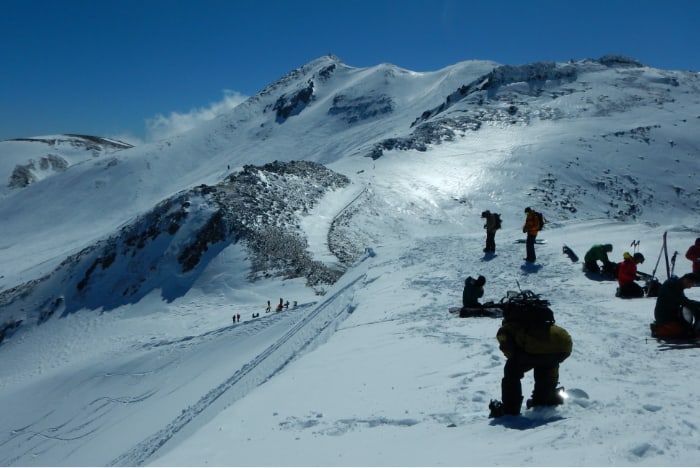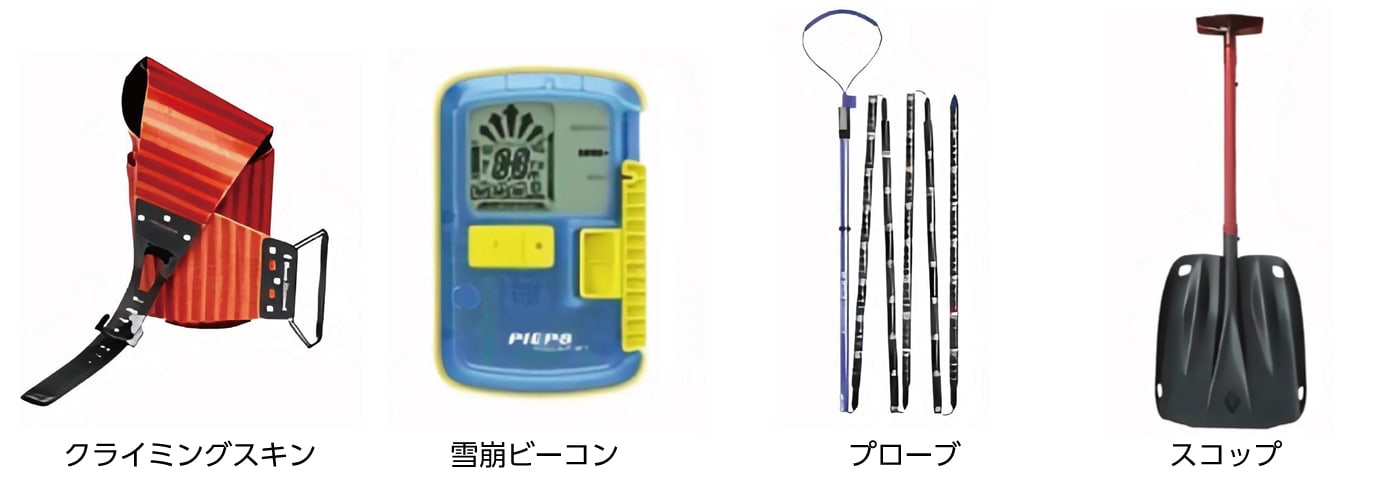The Japan Alps attract mountain skiers from around the world. They offer ease of access to advanced mountain skiing a relative short distance from major cities and their powder snow, known as JAPOW, is acclaimed above all else. We hope you will enjoy skiing the Japan Alps.
Mt. Norikura Ski Resort is the starting point of the 3000m Norikura Mountains. The course rises to nearly 3000m where the ski lift ends and descends into a vast, open valley for a dynamic backcountry ski run.
The greatest allure of backcountry skiing in Hakuba is its variety. From beginner courses to big berms on some of the world’s highest peaks, its slopes are truly diverse.
At the height of winter, Murodo and the Tateyama Mountains cannot be reached by people, but before the season starts and in the latter part of the season heading into spring, many backcountry skiers can be found here.

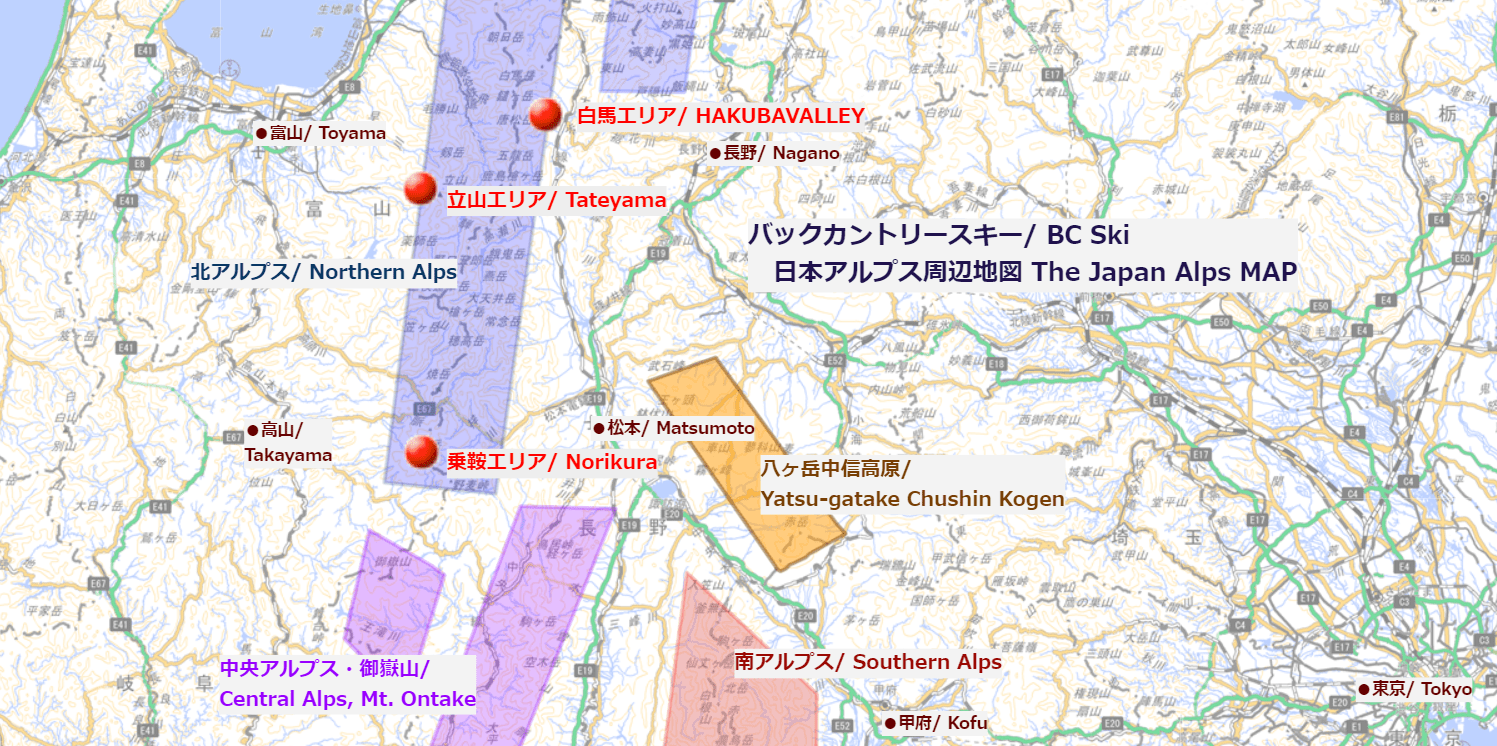
Back country skiing Basic information
Skiing is said to have originated in Northern Europe around 2500 B.C. and is thought to have been a means of transportation for hunting in snow-covered mountains.
It later evolved into a mode of transport across snow laden fields and mountains for armies and eventually developed into a leisure activity and sport. Ski slopes were born on the inclines in the foothills of mountains to practice and gradually evolved into the shape they have taken today.
In recent years, the desire has grown to glide down fresh powder snow amid untouched natural scenery. At one time people climbed snowy mountains with their skis in tow to enjoy the mountains in their natural state, but there has been a rapid increase in the number of enthusiasts who use the lifts and gondolas at ski resorts to casually go beyond the groomed areas and ski off-piste.
Skiing is a leisure activity that originated in nature, so this kind of activity should not be banned entirely, but while it can be light-heartedly enjoyed, it should not be forgotten that it also carries great risk and venturing into unpatrolled areas of ski resorts recklessly without proper knowledge, experience, and equipment should be somewhat regulated.
In order to avoid the dangers lurking in the untouched snow-covered mountains as much as possible and enjoy backcountry skiing, it is necessary to learn about the risks of snowy mountains, prepare with the appropriate equipment, and submit a mountain climbing registration form in case of a mishap.
The allure of backcountry
The allure of backcountry skiing is definitely the sense of freedom and accomplishment that comes with gliding down slopes in the middle of pristine, vast, natural scenery. The feeling of floating over deep, feathery drifts of powder snow draws you in and never lets you go. Mountaineers have always ventured into the fields beyond the groomed areas of ski resorts, but with the developments in ski equipment and gear and opening of new routes, many more skiers are now seeking the thrill of backcountry skiing on steeper slopes in deep, downy powder snow.
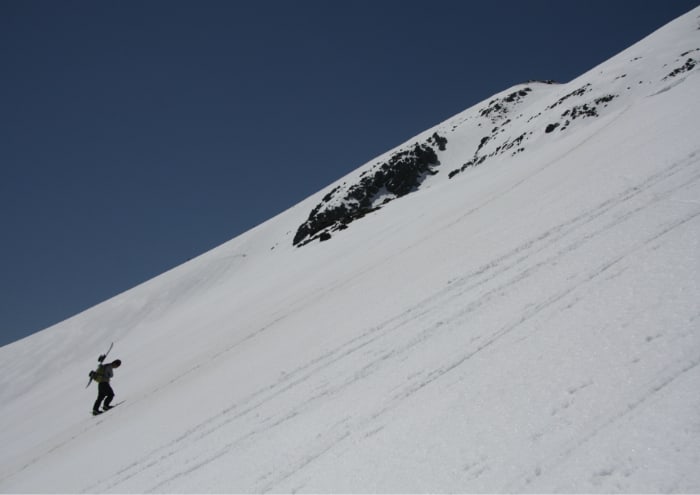
Technical points for backcountry skiing
- The skill to ski down expert trails at ski resorts in a variety of conditions, including fresh snow, deep snow, and crud snow, without falling.
- The physical strength to undertake the necessary mountain climbing activities within a given time period
- Proficiency in the use of avalanche safety gear
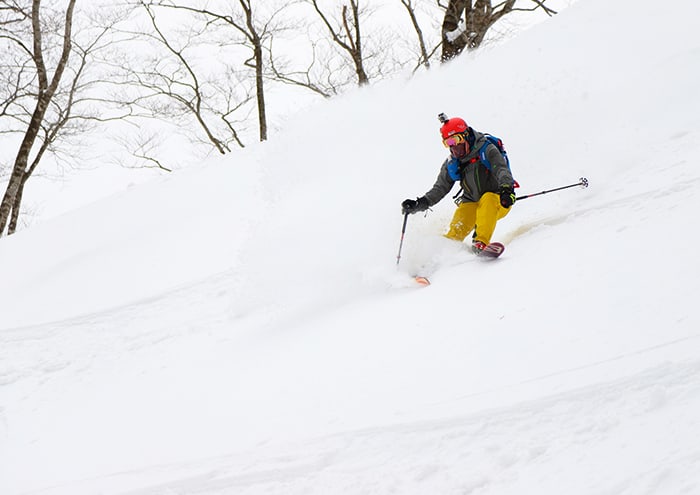
Points to remember when entering or skiing snow-covered mountains
- Backcountry ski season: Late November – late May (depending on the mountain area))
- Weather: This is one element that has a significant impact on snow conditions.
- Snow quality: It goes without saying powder is best, but at times it can by icy or slushy depending on the season. It is always changing.
- Basic knowledge of avalanches: Details can be found here (Japan Avalanche Network).

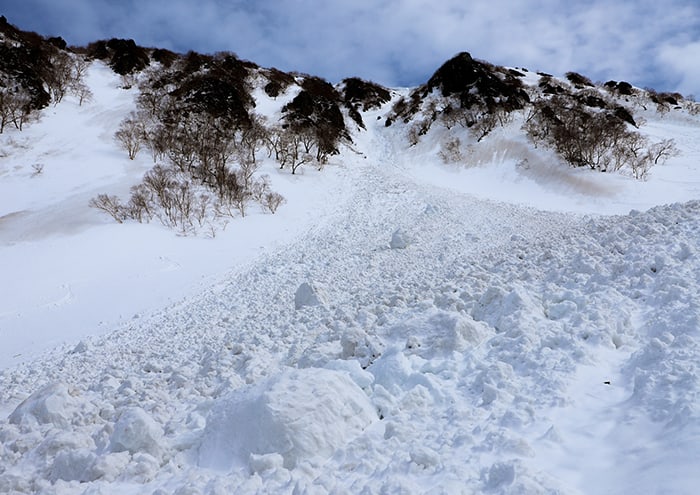
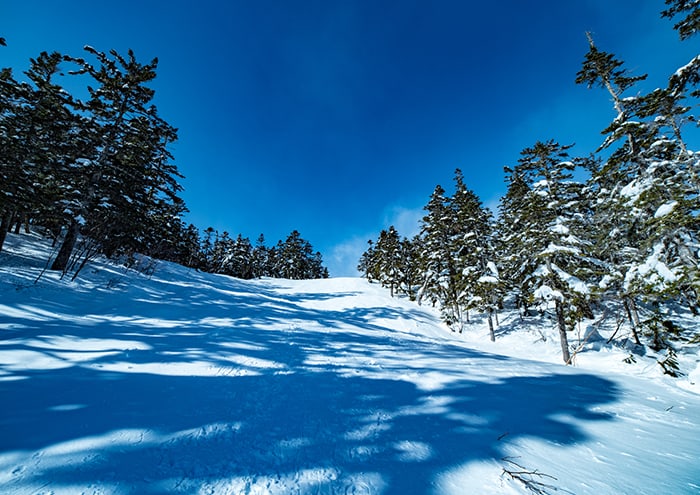
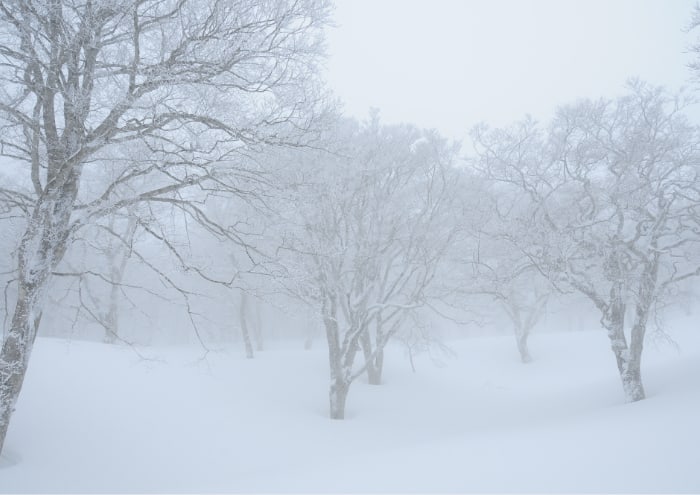
Backcountry ski Basic equipment
You should not only carry basic backcountry ski equipment, avalanche safety gear in particular (beacon, probe, shovel), you must also be proficient in using it.
●Climbing gear that attaches to the bottom of skis or splitboards when climbing snowy mountains to prevent slippage. They are called skins as long ago seal skins were used.
●A transceiver that transmits and receives radio waves when it is necessary to search for someone buried under an avalanche. Normally, it is set to “transmit,” but when a searcher is looking for someone buried under an avalanche, they switch their setting to “receive” and search for the buried party. The reception range of the radio waves starts at around 50m.
●Also called a sonde, this thin stick-like tool 2-3m in length and 1cm in diameter is used to search for buried people in an avalanche. It can also be used to monitor snow construction. They are often made of metal or carbon and can fold up to fit in a backpack.
●It should be carried along with a probe and beacon as one of the three essential avalanche safety gear tools. It was originally designed to dig out people buried under avalanches, but it can also be used to observe snow conditions or when making a snow cave.
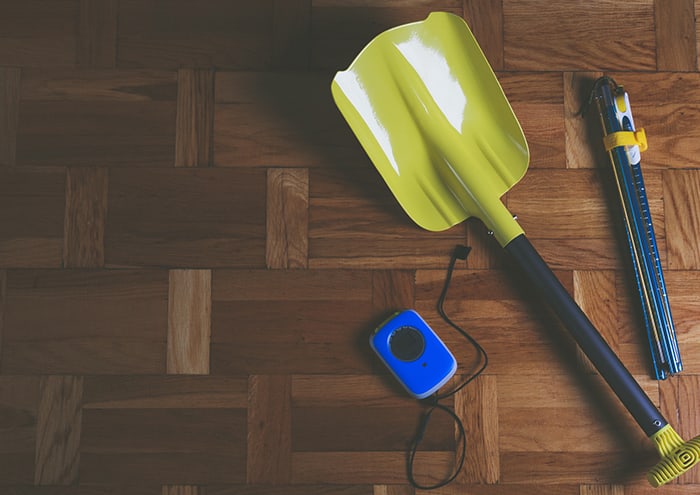
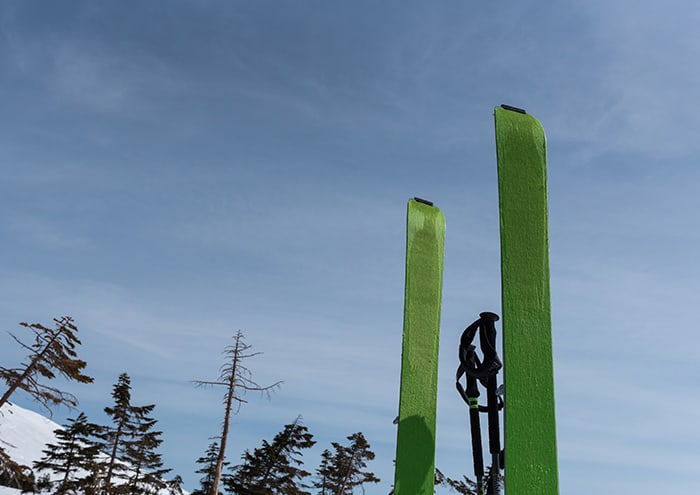
To enjoy backcountry skiing
Also, major deviations from the route outlined in your mountain climbing registration form can make it difficult to search for you if you should get lost and can greatly reduce your chances for survival.
In addition to this, terrain and environment can vary greatly from mountain to mountain, therefore some ski resorts have their own local rules that should be observed. Even if you follow all of the basic rules and local rules, when you enter the harsh, natural conditions of a winter mountain, you have to be aware it is impossible to avoid 100% of the risks involved.
Back country skiing is an activity to be enjoyed at one’s own risk, and the most important element in avoiding danger is to act cautiously and make level-headed decisions. It is also important to submit a mountain climbing registration form and be aware that providing an accurate description of your route will lead to a quicker search and rescue in the case of a mishap.
From that perspective, it helps to remember that the best way to enjoy yourself safely is to have a guide who can make level-headed decisions accompany you or to participate in a tour rather than going out alone.
